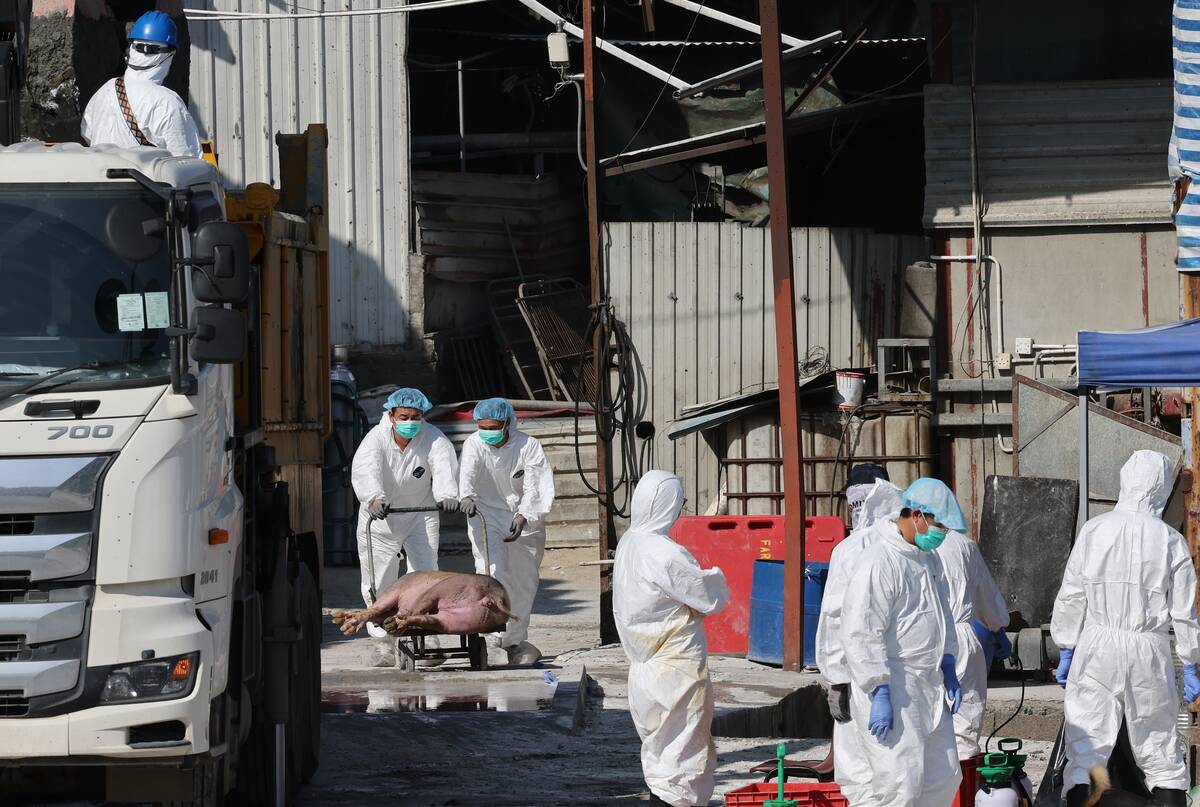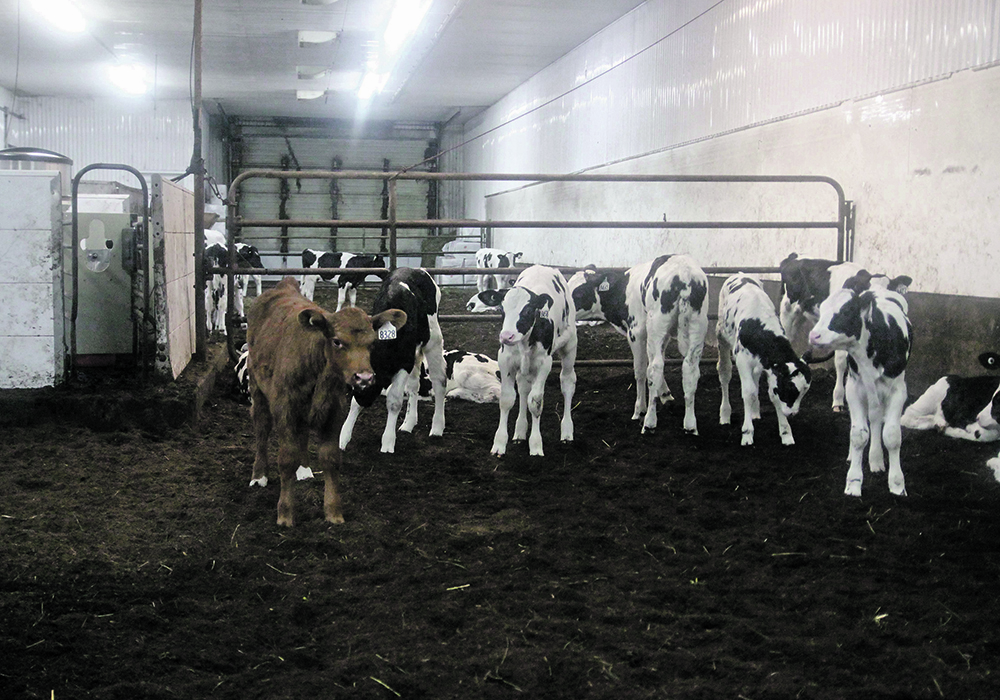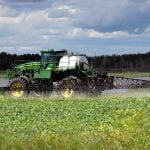U.S. researchers found that female calves born to stressed cows can go on to be less productive throughout their lives
This past summer was like few others for heat-related impacts on agriculture.
Now, a new study from the University of Florida has added to the understanding of heat stress effects on pregnant dairy cows, not only on the unborn calf but throughout its lifespan and across generations.
The experiments were conducted during the summers of 2014 and 2015 at the University of Florida’s dairy unit.
Forty Holstein cows ranging in age from two to four years and 30 calves took part in the study. They were housed under shade in a free-stall barn.
Read Also

Mixed results on new African swine fever vaccine
The new African swine fever vaccine still has issues, but also gave researchers insight into how virus strain impacts protection against the deadly pig disease.
The pen for cooled cows was equipped with water soakers and fans, whereas the pen for heat-stressed cows had no soakers or fans. The cows were either cooled or heat stressed during an approximately 45-day dry period representing the final 45 days of pregnancy.
According to the report, the average temperature-humidity index of the pens housing the pregnant cows was 77.9 and 77.6 for cooled cows and heat-stressed cows, respectively, in 2014 . In 2015, it was 77.6 and 77.9 for cooled cows and heat-stressed cows, respectively. Feed and water were available for all cows at all times. All calves were raised postnatally under identical management in stalls under shade.
“All of our studies have been done with ambient temperature between May and October,” said Geoffrey Dahl, professor in the university’s department of animal sciences.
“Typical temperatures were 30 C to 32 C with humidity that typically makes it worse. We did have significant impact of that humidity and the cows’ inability to get rid of heat.
We tend to look at it as to what temperature we see in the cow itself. We will usually have around a four-tenths to five-tenths of a degree Celsius increase in core body temperature whether measured by rectal or vaginal temperature.
We’ve had a bit of a pushback on that with people saying that’s not a high increase in temperature, but the thing to remember is that the cow is at that (temperature) from the time she dries off until the time she calves. It’s this chronic inability for the heat-stressed cow to have a normal temperature.”
The study calves, both bulls and heifers, were euthanized within two days of birth so that the wet weights of the small intestine and other organs such as the thymus, spleen, pancreas, liver, heart, kidney, and lung could be recorded. They found that the calves of heat-stressed cows had lower birth weights (about 1.1 kilogram lower for bull calves), lower organ weights, and higher rates of cell death in the intestine.
The conclusion was that heat stress in dams in late gestation significantly affected fetal growth and immune tissue development, which likely would also be associated with reduced immune function in early life. The higher intestinal cell death rates suggest that the calves have a reduced ability to absorb immune factors from colostrum.
“We knew that the immunoglobulin uptake from colostrum from heat-stressed cows was not as efficient as it was for the calves from the cooled dams,” said Dahl.
“The question was, why is this happening? This is obviously a function of gut closure in the animal. They can only take up these large proteins for a certain amount of time but why is it that these calves from the heat-stressed cows are having less ability to do that?”
They studied the colostrum but found no significant differences in terms of immunoglobulin content. However, there were differences in the calf’s capacity to take it up. This led to further study on the gut. The higher rate of intestinal cell death among calves born to heat-stressed cows suggested that they may have a reduced ability to absorb immune factors from colostrum, essential for the transfer of maternal immunity to the vulnerable calf in those first few hours after birth.
“There’s no ability for protein uptake after a day or so,” he said. “We were banking on that and thought that maybe that’s affected by heat stress, that process of gut closure.”
Dahl said calves are prone to elevated rates of mortality and morbidity in the neonatal time and pre-term births can exacerbate the problem. Early life losses can result from organ immaturity or dysfunction, especially the gastrointestinal tract and the immune system. Reduced weights of the thymus and spleen can be associated with slowed fetal growth and compromised immune function.
He said the effects of heat stress do not significantly change between breeds.
“Jersey cows are a little bit better able to deal with heat stress as they have a higher surface body mass,” he said. “Maybe there is a degree of change but it’s not that they can overcome this compared to Holsteins. The more severe the heat stress, the more severe the outcomes on the cow and calf.”
He said that those negative outcomes will persist. Cows will make less milk in subsequent lactations and the impacts persist in their offspring.
Heat stress in cattle can be subtle. Some farmers may believe that their animals are not subject to a lot of heat stress but that could be misleading. Dahl said that cows get heat stressed at a lower temperature than humans experience it, and that heat can be a challenge for them. He stressed the need to manage heat stress for all breeds rather than trying to breed against it.
“We do have animals that are more tolerant, and we have done some work on that, but I don’t think that Jersey versus Holstein or however you pick it, works,” he said. “Everything is in the individual management.”
He said if producers can only put money into one group, the dry cows should get priority.
“To me, the dry cows would be the first ones to treat versus lactating ones,” he said. “I say that because these effects are there in the cow from the time she calves through lactation.”
In addition to the economic benefits, heat-stress management is important for good animal welfare. Then there is the impact of heat stress on the calves’ future productivity.
“We did a large study last year looking at impacts on females,” he said. “Those calves go on to be less productive throughout their lives. (Ongoing research) is trying to determine why that is. It looks like there is some effect on mammary growth and some aspects of health and immunity. We are getting down to some of those mechanisms.”
The research was published in the September issue of the journal JDS Communications.















